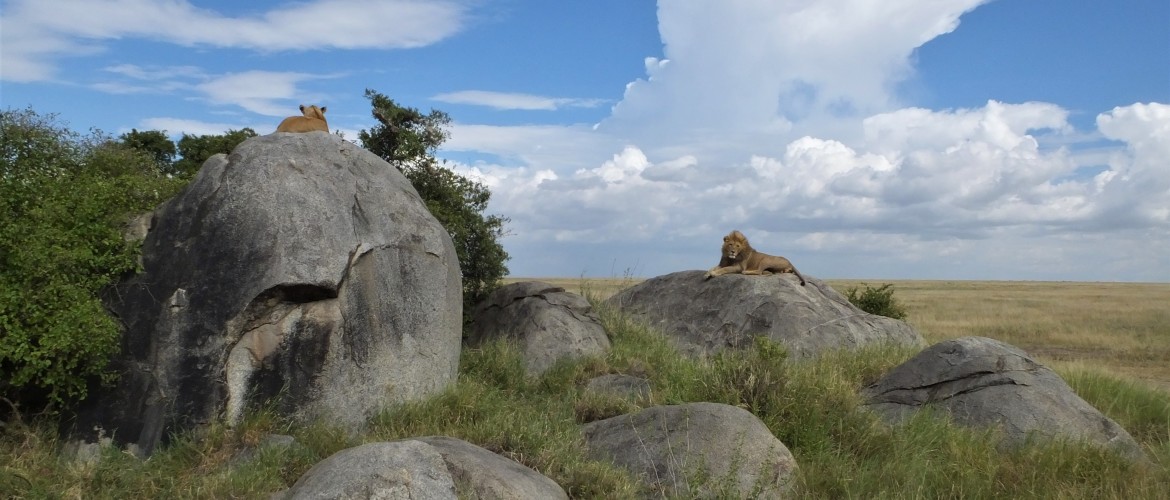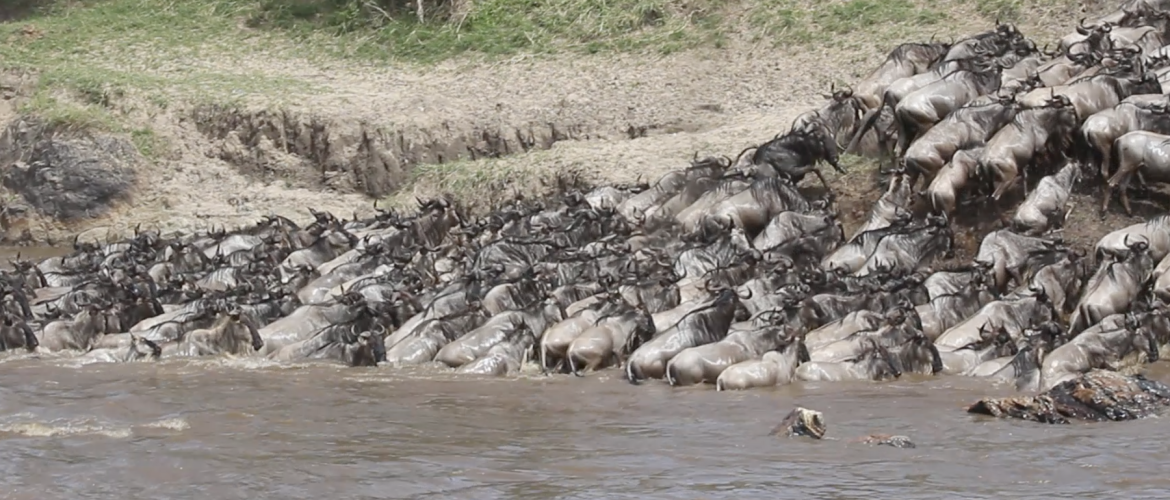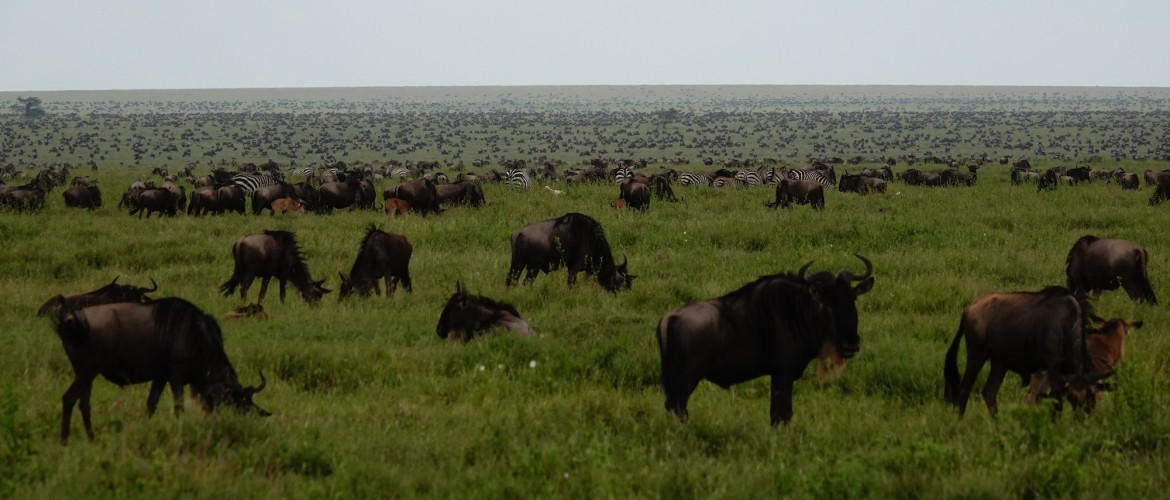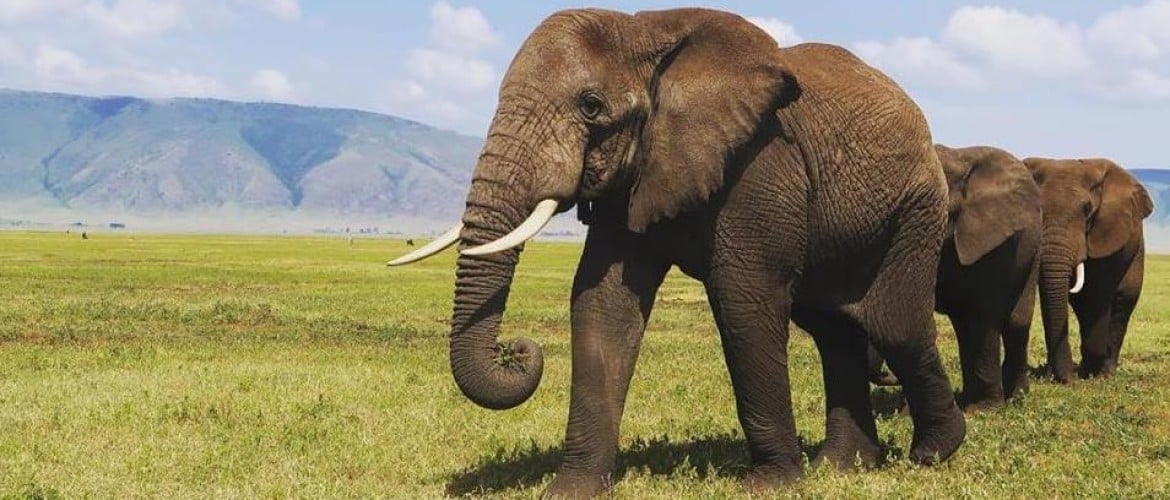The Serengeti is the epitome of safari, and is most famous for the great wildebeest migration. Tied to seasonal changes, the migration cycle is continuous – and as the mega herd moves in search of greener pastures, so should your safari planning. The Serengeti is vast, so ensure you research where the migrating herd is likely to be during your planned vacation dates. Make sure you allocate several days of your Serengeti safari itinerary to seeing the migration, it’s a spectacle not to be missed.
The Serengeti Safari Calendar
- January-March: Calving season on the southern grass plains.
Between January and March, the migrating herd is found in the short grass plains. This stage of the migration cycle sees the arrival of the mega herd and the onset of calving season. This, in turn, attracts predators including lions, leopards, cheetahs and hyenas. The short grass in this area allows for unimpeded views of the mega herd, and is well known place to spot cheetah. With the abundance of predators and prey, visitors at this time of year have a good chance of seeing a hunt, and maybe even a kill. Try and allocate 2 or 3 days to observing the mega herd at this time of year.
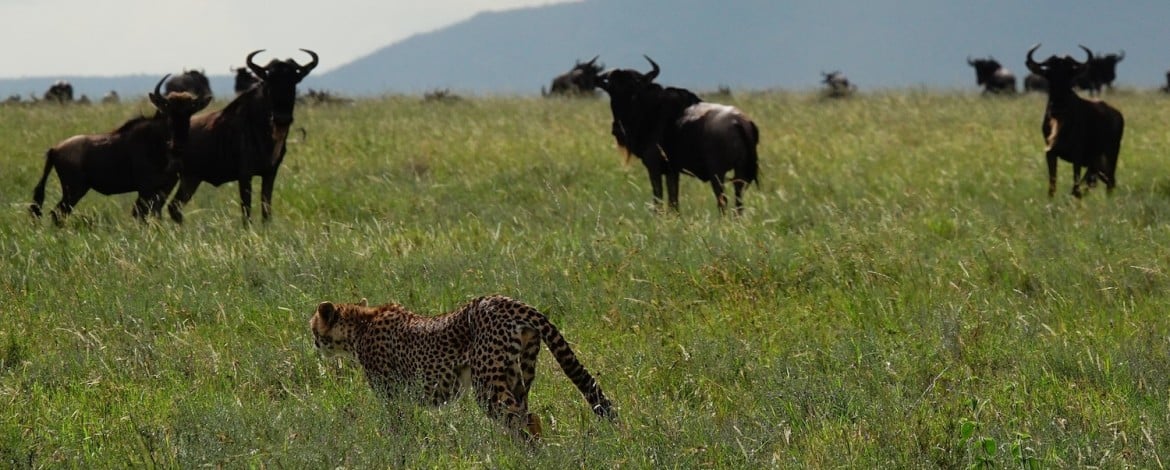
- April-July: Game spotting at Seronera, Central Serengeti.
As the short grass plains begin to dry out, the herds begin to press their way north. At this point, the mega herd fragments into smaller groups. The search for water drives them toward Seronera, an area in the middle of the Serengeti with perennial rivers. As a result of this water source, the area is home to a healthy population of resident big cats – lions, leopards, cheetah – as well as a diverse variety of gazelles and antelopes. Its central location and perennial water supply makes Seronera a great area for spotting wildlife throughout the year, and it is well worth investing several full days exploring here.
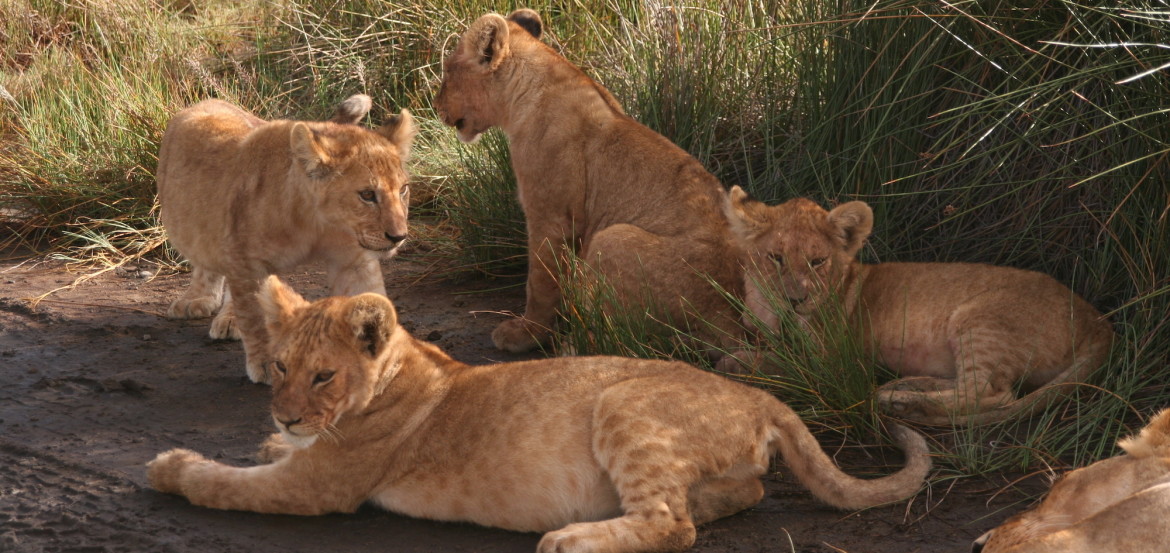
- August-September: See the river crossings in Kogatende, North Serengeti.
With the dry season approaching, the migration threads its way north is search of higher ground, where pastures are green. As they press on, they encounter the Mara river and carry out the world-famous river crossings. The whole sequence of events is rather dramatic. The herds arrive, usually running in single file and converge on the banks of the Mara river. Adding suspense, the crossing itself may commence immediately, after several hours or sometimes not for several days. When they finally begin, the wildebeest have to navigate steep drops on either side of the river, the crocodile infested water, and the ever-present lions and leopards that lurk behind them. Images of their dramatic leaps as they battle the river have become world famous. At this stage in the migration cycle, the herds are still split into different clusters. This allows visitors to drive along the river and find multiple different herds that may be crossing at different times.
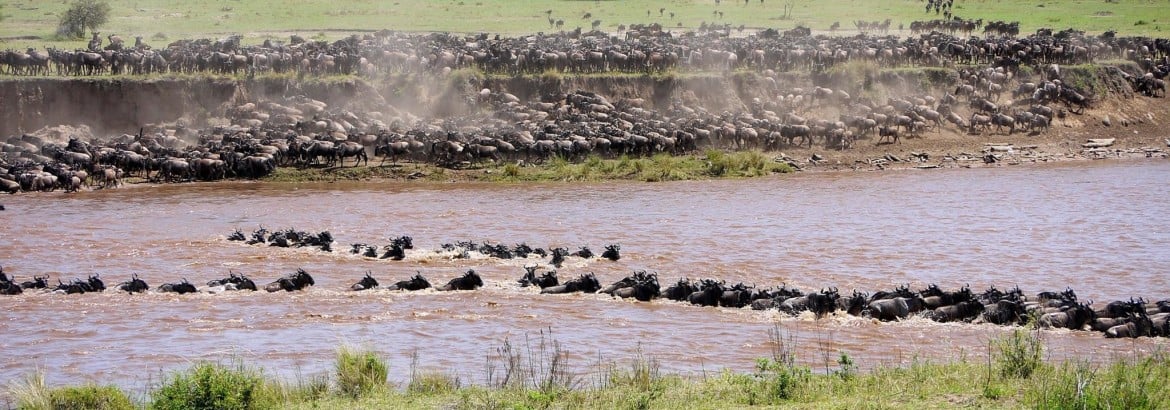
- October-December: Back to Seronera, Central Serengeti.
Animal movements are driven by the availability of grass and water. With the onset of the dry season, pools of water brought by the rains begin to dry out and the grasses sparser, and less moist. This drives the animals towards the Seronera area in central Serengeti: the area is rich in grass due to several perennial water sources. As above, Seronera has a high concentration of resident large predators, a reflection of the abundance of antelopes and gazelles in the area. Visit throughout the year for successful game drives, and spend 2-3 days exploring.
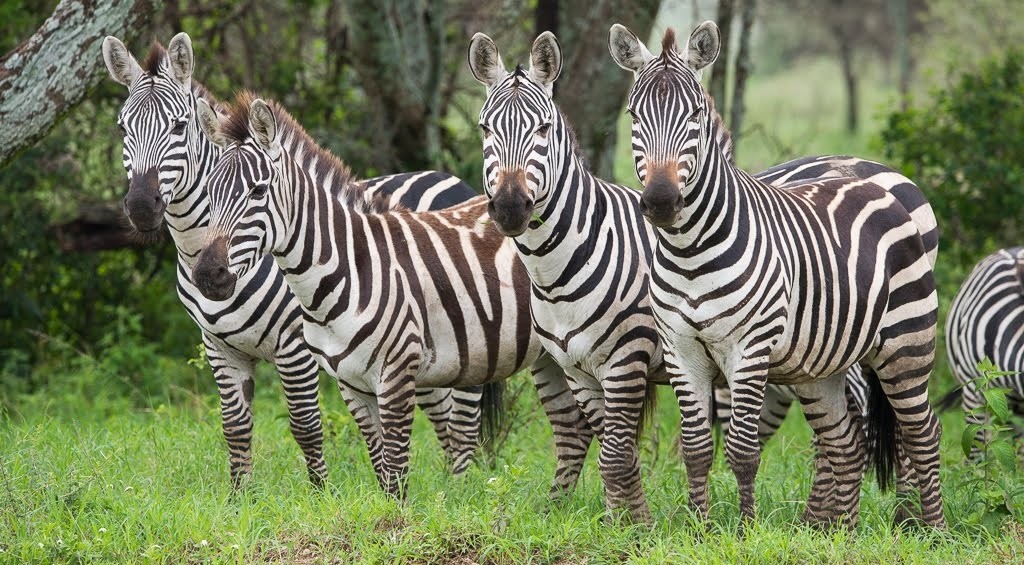
Your Serengeti safari: the right time, the right place
At Makasa we have many years of experience helping our guests plan their dream safari in the Serengeti. We can help tailor your trip so you are well positioned to observe the Serengeti’s extraordinary migration phenomenon. Download a sample migration itinerary here, or contact us for your own personal advice.

